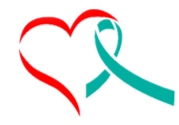IN A STATE OF HUMAN TRAFFICKING
It may come as a surprise to learn that North Carolina ranks within the top fifteen for states with human trafficking cases (Sampson, 2022). This means that the remaining seventy percent of U.S. states have fewer human trafficking cases than North Carolina. What may come as an even bigger surprise is that the number of reported cases in 2021 alone – 223 cases – does not accurately reflect the likely number of cases, and victims, within the state (National Statistics, 2022). It would not be unfair or inaccurate to say that there are likely hundreds, possibly even thousands, of human trafficking cases a year, in North Carolina, that do not get reported. North Carolina is in a state of human trafficking.
How did we get here?
Human trafficking has been categorized as “one of the fastest growing crimes in the United States” (What is Human Trafficking?, 2022). This is true but it is not the whole picture. Human trafficking is one of the fastest growing crimes in the United States, as well as North Carolina, because it is a continuously growing industry. Without a doubt human trafficking is a crime. But is also a business and as businesses do, the business of human trafficking within North Carolina has continued to grow and adapt to serve its clients. Traffickers are in the business to make money. In the case of labor trafficking, traffickers not only make money by utilizing labor they do not pay for, but they also save money by not following any other business practices that will eat into their profit margin, such as providing a safe work environment or paying payroll taxes. Also like a business, traffickers will adapt to the laws that directly affect them. Except in their case, traffickers will become savvier about hiding their business, hiding their money, and hiding their victims.
Another piece of the picture is that we, the consumers and clients of the human trafficking industry, do not always recognize that the person serving our meal, the person who stitched our handmade leather wallet, and the person who is standing on a dimly lit stage at 2 o’clock in the morning, could all be victims of human trafficking. It is understandable that one might assume they would immediately be able to tell the difference in any given situation between someone who wants to be where they are and someone who is being forced to be where they are. We have been conditioned to believe that trafficking victims will show physical signs of abuse or that their trafficker will be outwardly heinous, giving the situation away. This is a harmful myth. The truth is traffickers are excellent practitioners of emotional and psychological manipulation. Yes, there can be elements of physical abuse as well as the use of drugs to keep a victim compliant, but traffickers also know how to terrify and diminish their victims until they feel there is nowhere and no one safe to whom they can turn. In fact, before the physical abuse and drugs are ever introduced, it is likely that the trafficker has already gained control over their victim through fear and manipulation. Without a mark on them, a victim of human trafficking may stay under the thumb of their trafficker for years without ever alerting a single person to their situation.
How can we move forward?
There is a saying that the only way forward is through. For us to move from a state of human trafficking to state of awareness is to look through what we see on the surface. Victims of human trafficking may not always have a black eye or a plethora of bruises when you see them, but someone who is in an unsafe environment will exhibit certain signs and be unable to answer certain questions. Below are some signs to look for ( (State, n.d.):
Living with employer
Inability to speak to individual alone
Answers [to questions about themselves, their work, and/or their employer] appear to be scripted and rehearsed
Has your family been threatened?
Where do you sleep and eat?
Are you in debt to your employer?
Employer is holding identity documents
Submissive or fearful
We must also move through our fear of getting involved, or worse, getting it wrong. The fact is trafficking victims are not the only ones who are scared. We are also scared. Scared to think that same level of violence might be visited on us or our loved ones. Scared to think that we could be supporting a dry cleaner who is also a human trafficker. Scared to think that our neighbor’s nanny might not be all that she seems. We must get through our fear to see the fear of the victim and the reality of the traffickers to move from a state of human trafficking to a state of awareness, to the end of human trafficking in North Carolina.
References
National Statistics. (2022). Retrieved from National Human Trafficking Hotline: https://humantraffickinghotline.org/en/statistics
Sampson, M. (2022). N.C. ranked in top 15 states for human trafficking cases. Retrieved from North Carolina Stop Human Trafficking: https://encstophumantrafficking.org/2022/12/21/n-c-ranked-in-top-15-states-for-human-trafficking-cases/
State, U. D. (n.d.). Identify and Assist a Trafficking Victim - Office to Monitor and Combat Trafficking in Persons. Retrieved from U.S. Department of State: https://www.state.gov/identify-and-assist-a-trafficking-victim/
What is Human Trafficking? (2022, November 10). Retrieved from North Carolina Department of Administration: https://ncadmin.nc.gov/divisions/council-women-youth/human-trafficking/basics#human-trafficking-in-north-carolina

